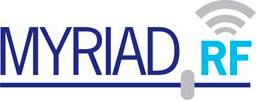Decompile SDR#:
…
this.LoadSource(“AIRSPY”, (IFrontendController) new AirspyIO(), int.MaxValue);
this.LoadSource(“AIRSPY HF+”, (IFrontendController) new AirspyHFIO(), int.MaxValue);
this.LoadSource(“Spy Server”, (IFrontendController) new SpyServerIO(), int.MaxValue);
this.LoadSource(“UHD / USRP”, “SDRSharp.USRP.UsrpIO,SDRSharp.USRP”, 10);
this.LoadSource(“HackRF”, “SDRSharp.HackRF.HackRFIO,SDRSharp.HackRF”, 10);
this.LoadSource(“RTL-SDR (R820T)”, “SDRSharp.R820T.RtlSdrIO,SDRSharp.R820T”, 10);
this.LoadSource(“RTL-SDR (USB)”, “SDRSharp.RTLSDR.RtlSdrIO,SDRSharp.RTLSDR”, 10);
this.LoadSource(“RTL-SDR (TCP)”, “SDRSharp.RTLTCP.RtlTcpIO,SDRSharp.RTLTCP”, 10);
this.LoadSource(“FUNcube Dongle Pro”, “SDRSharp.FUNcube.FunCubeIO,SDRSharp.FUNcube”, 10);
this.LoadSource(“FUNcube Dongle Pro+”, “SDRSharp.FUNcubeProPlus.FunCubeProPlusIO,SDRSharp.FUNcubeProPlus”, 10);
this.LoadSource(“SoftRock (Si570)”, “SDRSharp.SoftRock.SoftRockIO,SDRSharp.SoftRock”, 10);
this.LoadSource(“RFSPACE SDR-IQ (USB)”, “SDRSharp.SDRIQ.SdrIqIO,SDRSharp.SDRIQ”, 10);
this.LoadSource(“RFSPACE Networked Radios”, “SDRSharp.SDRIP.SdrIpIO,SDRSharp.SDRIP”, 10);
this.LoadSource(“AFEDRI Networked Radios”, “SDRSharp.AfedriSDRNet.AfedriSdrNetIO,SDRSharp.AfedriSDRNet”, 10);
…
This is the list of radios who is received all commands from SDR# directly or additional plugins. Magic line for LimeSDR is:
add key=“LimeSDR” value=“SDRSharp.LimeSDR.LimeSDRIO,SDRSharp.LimeSDR”
If anyone know how to fully utilize LimeSDR frontend capability this is the right place. Write to the author of SDR# and ask for clarification.
